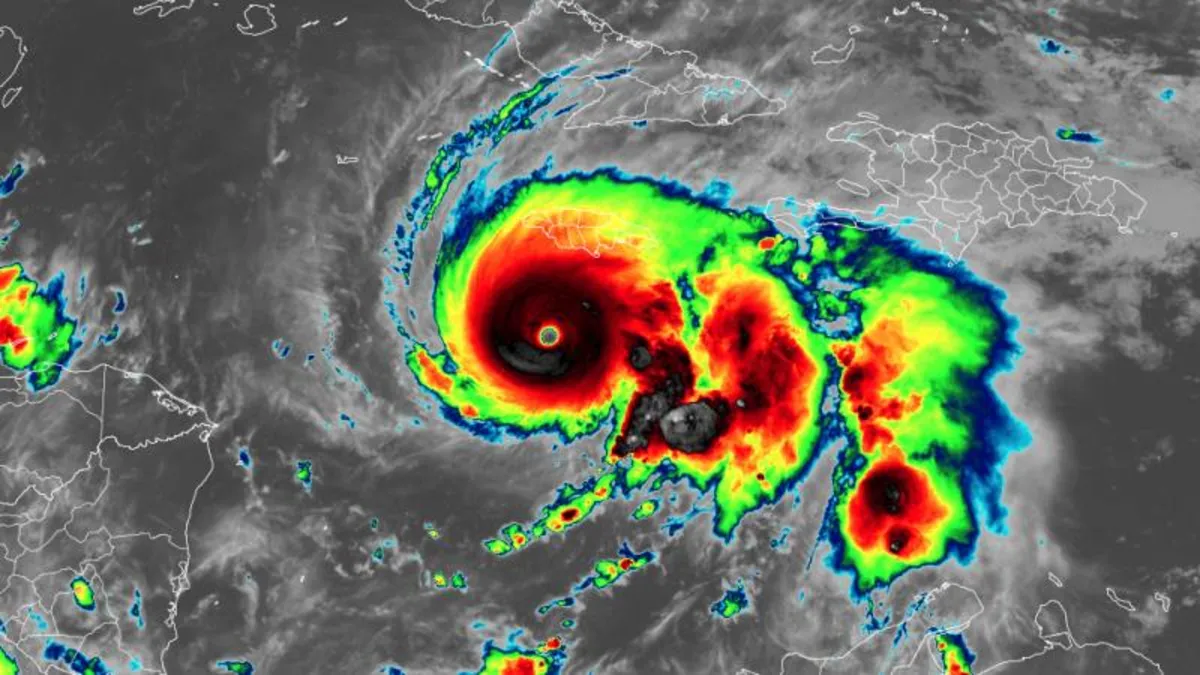
The hurricane season is gradually winding down across most of the Atlantic, but late October and November often see storms like Hurricane Melissa forming in the Caribbean. While the rest of the Atlantic cools, the Caribbean maintains its warmth, offering the necessary energy for hurricanes to develop and intensify. As atmospheric conditions shift with the changing seasons, the jet stream's stronger winds move southward, creating disruptive wind shear across the open Atlantic. However, the Caribbean remains a pocket of calmer air, making it one of the few regions where hurricanes can still form late in the year, even as the rest of the Atlantic quiets down.
As of 5 p.m. ET, Hurricane Melissa remains a powerful Category 5 hurricane with sustained winds reaching 175 mph. According to the National Hurricane Center, the hurricane could potentially strengthen even further in the coming hours. In recent hours, Melissa has veered slightly west of its predicted track, prompting a shift in the anticipated landfall point in Jamaica, which is now expected near Black River in the southwestern part of the island after sunrise on Tuesday.
Despite potential minor fluctuations in wind speed, Melissa is projected to maintain its Category 5 status at landfall. Following Jamaica, the hurricane is forecasted to strike Cuba as a major hurricane late Tuesday night or early Wednesday morning, with additional impacts expected in the Bahamas and surrounding areas. A hurricane warning is currently in effect for the southeastern and central Bahamas, and a tropical storm warning is in place for the Turks and Caicos Islands, indicating that powerful winds are likely to begin affecting these regions within the next 36 hours.
Jamaica is bracing for the severe impacts of Hurricane Melissa, with the highest risk from dangerous winds focused on the area northeast of the storm’s center, affecting most of the island. The counterclockwise rotation of the hurricane enhances wind speeds on the right side, creating stronger gusts and a heightened risk of destructive storm surge. Unfortunately, this means that areas east of where the center of Melissa makes landfall could face extreme wind damage and coastal flooding.
In anticipation of the storm, Jamaican Prime Minister Andrew Holness expressed concerns about the country's infrastructure's ability to withstand a Category 5 hurricane, stating that significant dislocation could occur. He urged all Jamaicans and well-wishers to pray that the hurricane does not make direct landfall. Shelters are being established across the island, with Glendevon Primary School in Montego Bay transformed into a refuge for those in need.
Residents across Jamaica are taking precautions, with many preparing their homes and gathering supplies. In Kingston, gas station attendants are securing fuel pumps, while coastal residents like Susan Brown are closely monitoring the ocean's waves, voicing concerns about safety. Others, like Robert, are using sandbags to secure their homes against the anticipated wind and storm surge, while some choose to stay put, fearing they may not be able to return if they evacuate.
Hurricane Melissa is also expected to take a direct hit on Cuba, likely while still a powerful major hurricane. Landfall is anticipated late Tuesday night or early Wednesday morning, with rain and winds starting before that. Southern Cuba could experience up to 30 inches of rainfall, posing significant risks of flash flooding and mudslides.
Evacuations are already underway, with over 119,000 people evacuated in Santiago de Cuba, as reported by state-run media. Public transport in eastern Cuba has been suspended, and many residents are preparing for the storm by purchasing essential supplies and securing their properties against the anticipated devastation.
Though Hurricane Melissa is not expected to make direct landfall in the United States, its effects will still be felt along the East Coast. The storm is likely to churn up rough seas and increase the risk of dangerous rip currents starting Wednesday, as it moves into the Atlantic.
The mountainous regions of Jamaica, particularly the Blue Mountains, could see extreme rainfall totals of up to 40 inches, significantly elevating the risk of flash floods and landslides. This rain could account for roughly 20% of the mountains' average annual rainfall, all within just a few days.
Hurricane Melissa's powerful winds place it among the strongest hurricanes on record in the Atlantic basin, with sustained winds of 175 mph. Only a handful of hurricanes have recorded stronger winds, and Melissa is now considered one of the most formidable storms to traverse the Caribbean Sea.
In light of Hurricane Melissa's impending landfall, Jamaica's Minister of Labour and Social Security emphasized the importance of evacuation orders, urging residents in vulnerable areas to take them seriously. Meanwhile, the U.S. State Department is closely monitoring the situation, preparing to provide assistance if necessary.
As Hurricane Melissa approaches, residents in Jamaica and Cuba are urged to remain vigilant and prepared for what could be a catastrophic storm. The potential for life-threatening conditions underscores the importance of following evacuation orders and taking precautions seriously.